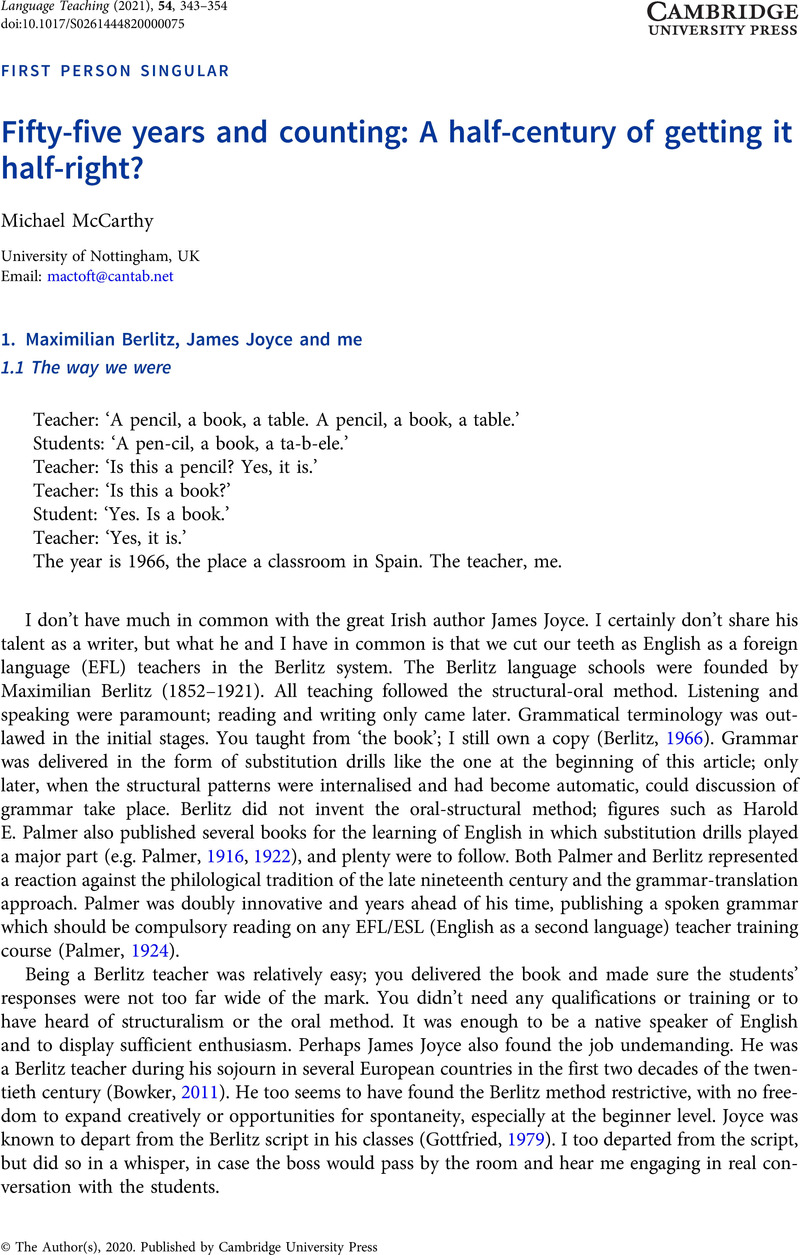Crossref Citations
This article has been cited by the following publications. This list is generated based on data provided by Crossref.
Kiczkowiak, Marek
2022.
Are most ELT course book writers white ‘native speakers’? A survey of 28 general English course books for adults.
Language Teaching Research,
p.
136216882211232.






